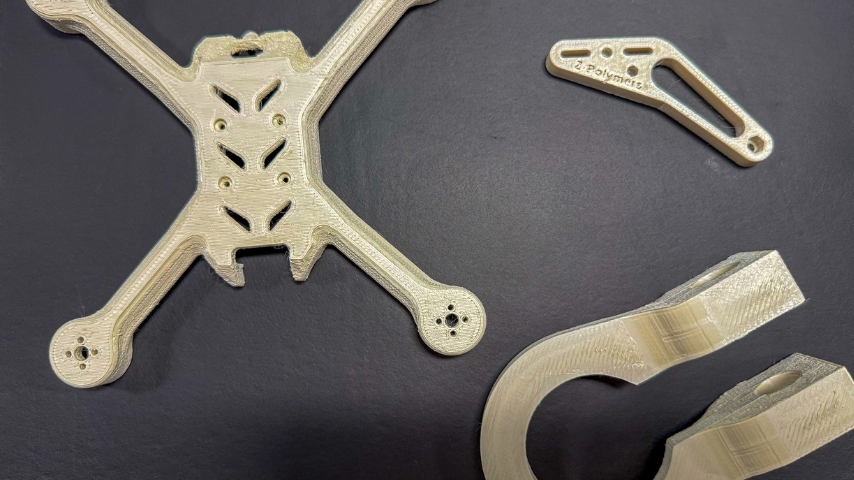Gel Snail Shows off Self-Healing, Conductive Material
Gel Snail Shows off Self-Healing, Conductive Material


With the goal of an autonomous soft material system, researchers crossed the first hurdle by embedding stretchy hydrogel with a network of microflakes and liquid metal.
Snails are slimy and soft. They move slowly, at a deliberate and measured pace. And they may be the best way to demonstrate a new material that is squishy, self-healing, and allows movement since it’s an excellent conductor of electricity.
“We wanted the material to be as autonomous and as self-sufficient as possible,” explained Carmel Majidi, a mechanical engineer at Carnegie Mellon University and the senior author of the study “A Self-Healing Electrically Conductive Organogel Composite” that recently appeared in Nature Electronics.
Self-healing hydrogels are a great material for soft robotics and tissue engineering. They use spontaneous intermolecular forces to recover from physical damage caused by extreme strain, pressure, or tearing. The problem with these materials, however, is that they have relatively low electrical conductivity. This fact alone limits their application in stretchable and mechanically robust circuits.
“We needed to find a conductive filler material that can instantaneously recover its electrical conductivity,” Majidi explained.
Tissue-like
The most practical application of the new material is healthcare. “We want the material to be soft so it can interface with the human body,” he explained. “It should be stretchable so it can undergo loads and strains and not fail.” And it needed to be electrically conductive so it can be used for sensing or for circuit wiring.
A lot of folks for years have been working to develop conductive gels. “And some of them also have self-healing properties.” Majidi said. “But oftentimes those materials might be ionically conducting, but not electrically conductive.” They simply fall short when it comes to adequate connectivity for a lot of practical circuit applications.
“So what we demonstrated is that we can actually make a material conductive enough that it can deliver pretty significant amounts of electrical current,” he said.
The team solved the problem of low electrical conductivity of soft robots with an organogel composite based on poly(vinyl alcohol)–sodium borate. The research team reports the squishy, low-density gel has high electrical conductivity (7 × 104 S m−1), low stiffness (Young’s modulus of ~20 kPa), high stretchability (strain limit of >400 percent), and spontaneous mechanical and electrical self-healing.
Become a Member: How to Join ASME
The researchers embedded the stretchy material with a percolating network of silver microflakes and gallium-based liquid metal microdroplets. They describe the self-healing tissue-like material as able to be broken or torn, but when its edges touch, the molecular bonds quickly re-form without additional heat or chemicals.
The team demonstrated the capabilities of the composite using a soft robot snail. That proved to be an excellent choice because the hydrogel material system replaces water with an organic solvent (ethylene glycol), which avoids dehydration and property changes for over 24 hours in an ambient environment.
“The snail-inspired soft robot is fully wireless, untethered,” Majidi said. It has an onboard energy source and motor. “All the circuitry that connects the motor with the controller is through the self-healing, conducted material,” he explained.
Healthcare uses
“We show that these properties make them suitable as bioelectrodes that can conform to the skin for electrophysiological measurements to track muscle activity, cardiac activity, and neurological signals,” Majidi said. Moreover, the self-healing properties of the material give scientists the ability to attach smaller electrodes to create a larger electrode that covers a larger surface of the skin.
“Compared to the existing conductive gels that are currently used, the self-healing material that we introduce here would be more robust to tearing and damage and could potentially be reused or reconfigured for performing measurements on different parts of the body,” he concluded.
More for You: Here Are 7 New, Innovative Designs for Soft Robots
“We use this feature to combine small electrodes used to measure the forearm motion, for example, then into a larger electrode that can measure muscle activity on the leg,” Majidi said. The electrodes adhere and peel from the skin easily and are conductive enough that they don’t need additional wires to connect to a computing interface for signal processing—so that monitoring can continue beyond a clinical setting.
Robotics and 3D printing
The eventual importance of the material is that it can be used in robots since it is soft, self-healing, and fully autonomous, not dependent on a human to perform repairs.
“Specifically, we show that the material can function as internal electrical circuitry—analogous to motor neurons in nervous tissue—for connecting actuators to a computer controller and power supply,” Majidi said. “Such soft robots could crawl, slither, or walk on their own and independently explore environments.”
To do this the material must interface well with motors or actuators. “Having a robust interface that can allow for kind of that seamless connection between the two without itself being kind of a point of failure, will be the next big challenge,” Majidi explained.
The team is also in the process of studying how to 3D print these materials. “This would be accomplished using a ‘direct ink write’ approach in which a pressurized syringe and needle is mounted to a motorized stage,” Majidi explained.
The team has experienced some promising results with similar material formulations. “But we still need to understand the influence of the liquid metal and silver filler particles on the print behavior,” he admitted.
Cathy Cecere is Membership Content Program Manager.





